In 2015, Pluto emerged from the gloom at the Solar System’s ragged edge – and a new world came in from the cold.
Five billion kilometres (3 billion miles) from Earth, on 14 July 2015, NASA’s piano-sized New Horizons probe swept past the dwarf planet and glimpsed a crater-scarred landscape teeming with nitrogen glaciers, winding canyons, water-ice mountains and – maybe – a substantial ocean in liquid form.
More Pluto science

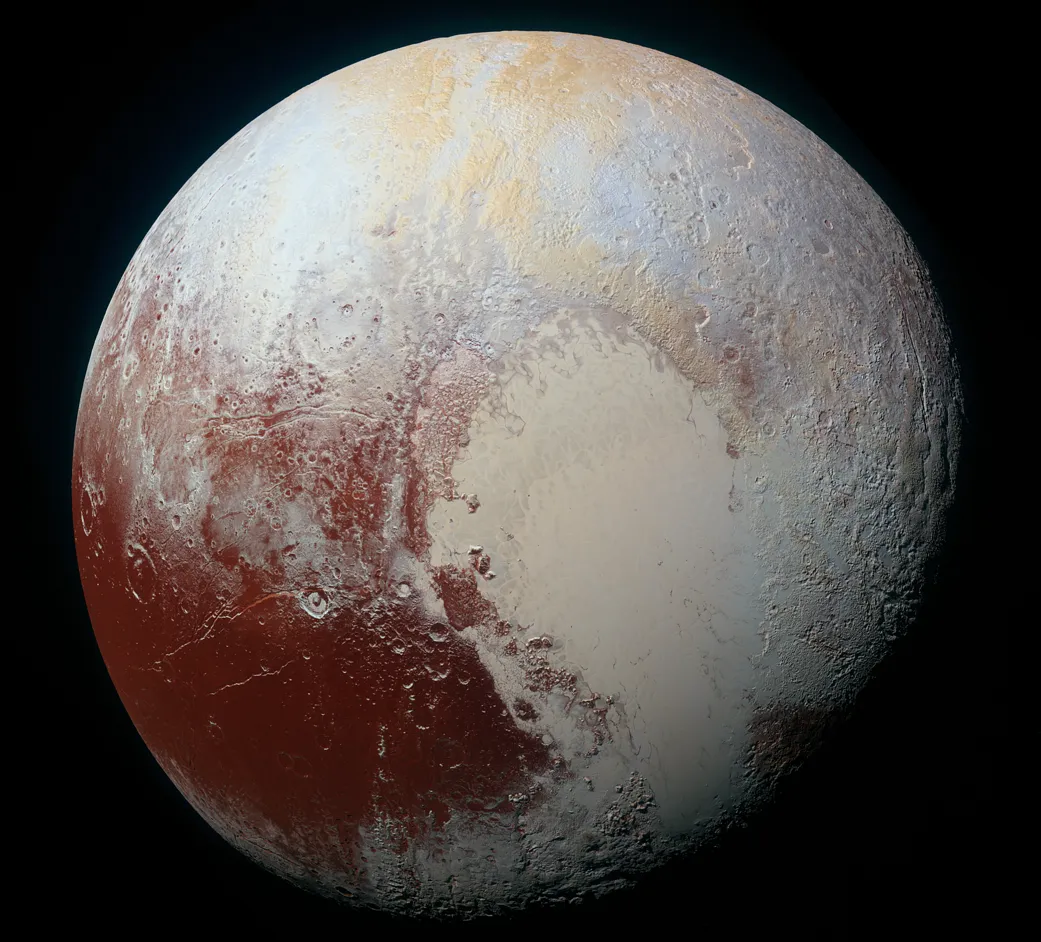
Pluto, from discovery to New Horizons
The title ‘planet’ has proven a thorn in Pluto’s side.
Discovered by Clyde Tombaugh in 1930 and named by schoolgirl Venetia Burney for the Roman god of the underworld, generations of children knew Pluto from classroom mnemonics as the Sun’s ninth planet.
In 1978, Jim Christy discovered Pluto’s moon, Charon. The name honoured both the mythical ferryman of the dead and Christy’s wife, Charlene.
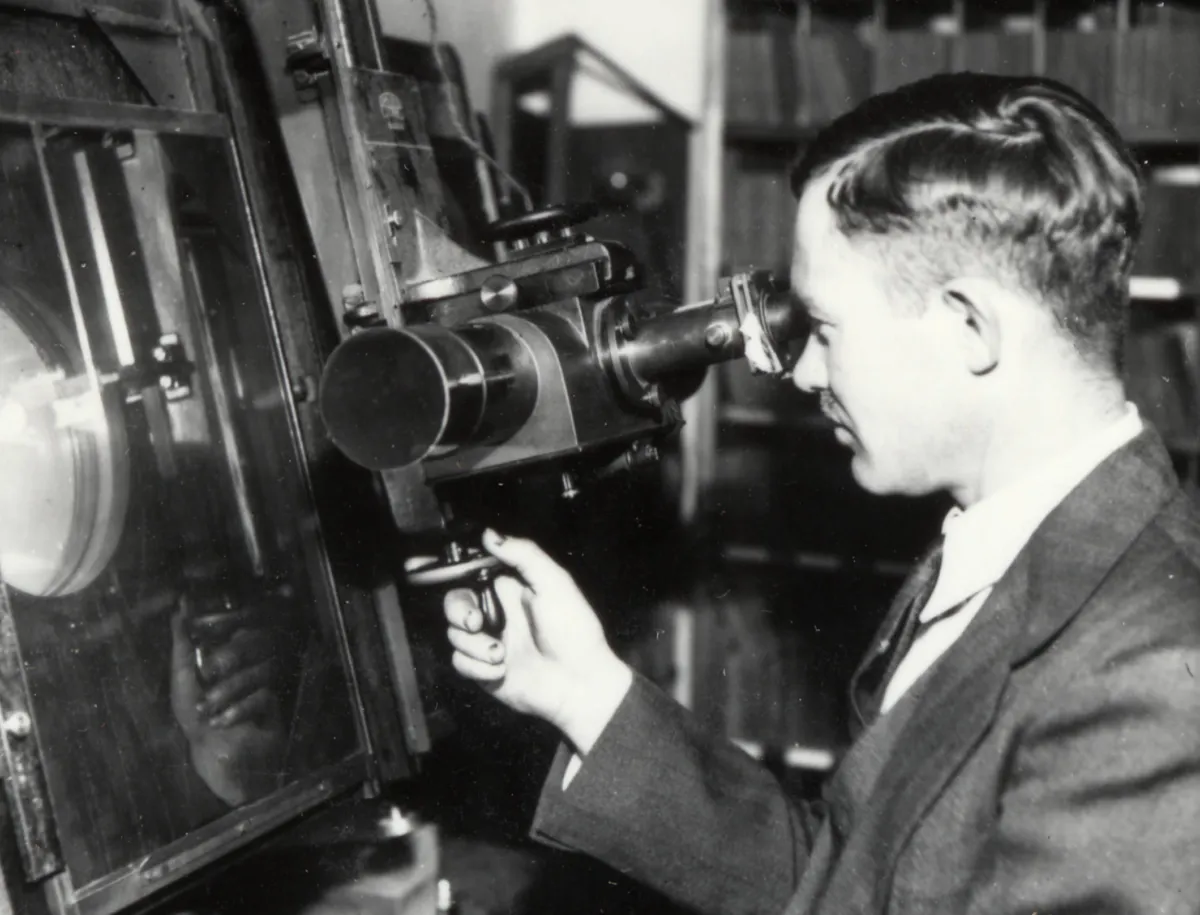
Charon is half Pluto’s size and an eighth of its mass.
The two bodies’ barycentre of mass lies outside them: like figure skaters, they synchronously circle an empty patch of space every 6.4 days in tight tidal lockstep, each perpetually presenting the same hemisphere to the other.
Pluto’s planetary downfall began in 1992, when astronomers discovered the Kuiper Belt, a disc of millions of icy planetesimals beyond Neptune.
It furnishes a treasure trove of pristine relics geochemically unaltered since the Solar System’s infancy.

With 3,000 Kuiper Belt objects officially known today, the detection of several large icy bodies after 2003 prompted the International Astronomical Union (IAU) to redefine what constituted a planet.
In 2006, Pluto, now recognised as part of the Kuiper Belt, was recategorised as a ‘dwarf planet’. Pluto went from the smallest planet to the biggest Kuiper Belt object.
New Horizons launched in January 2006 on a solar-escape trajectory at 58,500km/h (36,400mph), the fastest Earth departure of any spacecraft.
It carried 434,700 human names on a CD, a ‘Pluto Not Yet Explored’ stamp and 30g of Clyde Tombaugh’s ashes.
New moons, new danger?
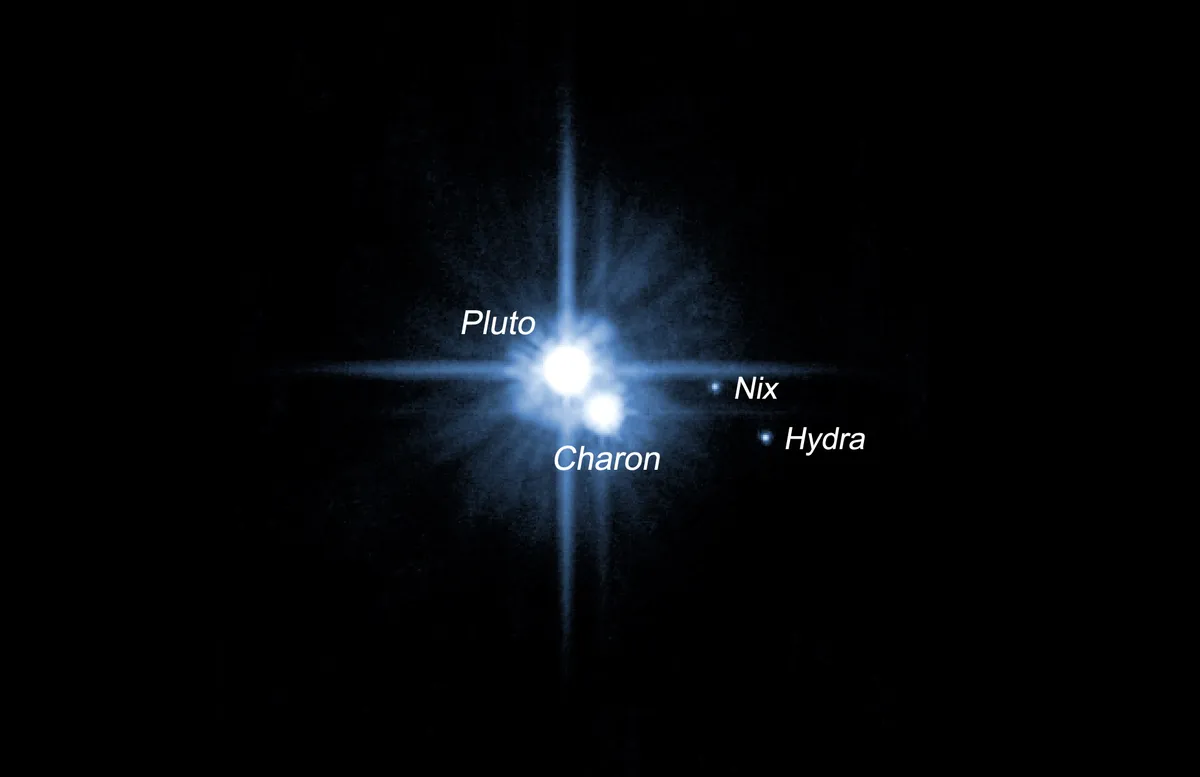
In 2005, the Hubble Space Telescope found two new moons, Nix and Hydra, around Pluto, leading to concerns as New Horizons drew nearer that unseen debris might cripple the probe.
Hubble discovered two more tiny moons, Kerberos in 2011 and Styx in 2012, but the likelihood of debris impacts was calculated at less than 0.3%.
By July 2015, the mood reached fever pitch at New Horizons’ control centre at the Johns Hopkins University Applied Physics Laboratory.
Teams toiled around the clock, catnapping in empty offices or conference rooms, consuming copious quantities of caffeine, with pizza deliveries on speed-dial.
Ten days out from Pluto, an overloaded computer threw New Horizons into safe mode, forcing hearts into throats for two tense hours until contact was restored.
At 11:49 UTC on 14 July, the probe flew within 12,470km (7,750 miles) of Pluto.
Its high-gain antenna couldn’t be pointed at Earth while collecting data, and one-way communications took four hours and 25 minutes to reach home.
All told, this time-lag yielded an uncomfortable radio silence spanning 22 hours.

New Horizons phones home
Waiting anxiously at the Kossiakoff Center at Johns Hopkins were 250 media personnel, hundreds of staff and 1,600 guests, including Jim and Charlene Christy, the latter excitedly emailing family as she prepared to see ‘her’ moon for the first time.
"A lot of husbands promise their wives the moon," she said, "but Jim actually delivered."
A telemetry burst heralded success.
"We have carrier lock," reported mission operations manager Alice Bowman at 00:52 UTC on 15 July, confirming NASA’s Deep Space Network had received a signal.
After subsystem teams reported a ‘green’ status, Bowman called the New Horizons principal investigator, Alan Stern.
"PI, this is MOM on Pluto-1," she said. "We have a healthy spacecraft. We have recorded data of the Pluto System and are outbound from Pluto."
Her words were drowned out by a pandemonium of applause. Stern displayed an enlarged version of the 1991 ‘Pluto Not Yet Explored’ stamp with ‘Not Yet’ crossed out.
And with one of those 29-cent stamps aboard the probe, in 2016 New Horizons won a Guinness World Record for the furthest distance travelled by a postage stamp.

What New Horizons saw at Pluto
Among the probe’s first images was Tombaugh Regio, a heart-shaped basin spanning 1,600km (1,000 miles).
Its western lobe, Sputnik Planitia, is a glacier of nitrogen, methane and carbon monoxide ices in polygonal cells.
Its ‘shoreline’, bounded by water-ice mountains, is frozen hard as rock at Pluto’s mean temperature of –229°C (–380°F).
Iceberg-like blocks ‘float’ atop Sputnik Planitia’s frozen sea of soft volatiles.
Churning, convective cells of icy material heated by internal warmth cyclically refresh the surface.
The result: Sputnik’s smooth terrain is geologically young – no more than 10 million years old – with few visible craters.

A world tipped over
In June 2016, it was reported that Sputnik Planitia is probably a ‘cold trap’ where frozen nitrogen accumulated into an ice sheet 4km (2.5 miles) thick.
An impactor 10km (6.2 miles) wide may have formed Sputnik elsewhere on Pluto, but the water-ice’s huge mass caused it to migrate to its present spot, 25° north of the equator.
This enormous mass (plus tidal tugs and pulls from Charon) may also have tipped Pluto over.
Like Uranus, the dwarf planet rotates ‘sideways’ with an extreme 120° axial tilt.
Temperature models of Pluto’s highly inclined 248-year solar orbit suggest latitudes around 30° north and south are colder than the poles. And Sputnik could be so massive that it sank into the crust.
It’s about 3.2km (2 miles) below mean surface elevations, the lowest-lying area on Pluto.

Exploring Pluto's surface
New Horizons found ancient nitrogen riverbeds and lakes, and meandering canyons at the north pole.
Global maps made using New Horizons data reveal networks of ridges and troughs spanning 3,000km (1,800 miles).
Hummocky highlands, ‘snakeskin’ terrain and ‘halo’ craters with bright walls and dark floors point to a complex geological past.
Steep-sided water-ice mountains ascend to 3,500 metres (11,000ft), their peaks dusted with methane frost.
Blade-like spires of methane ice rise taller than New York skyscrapers.
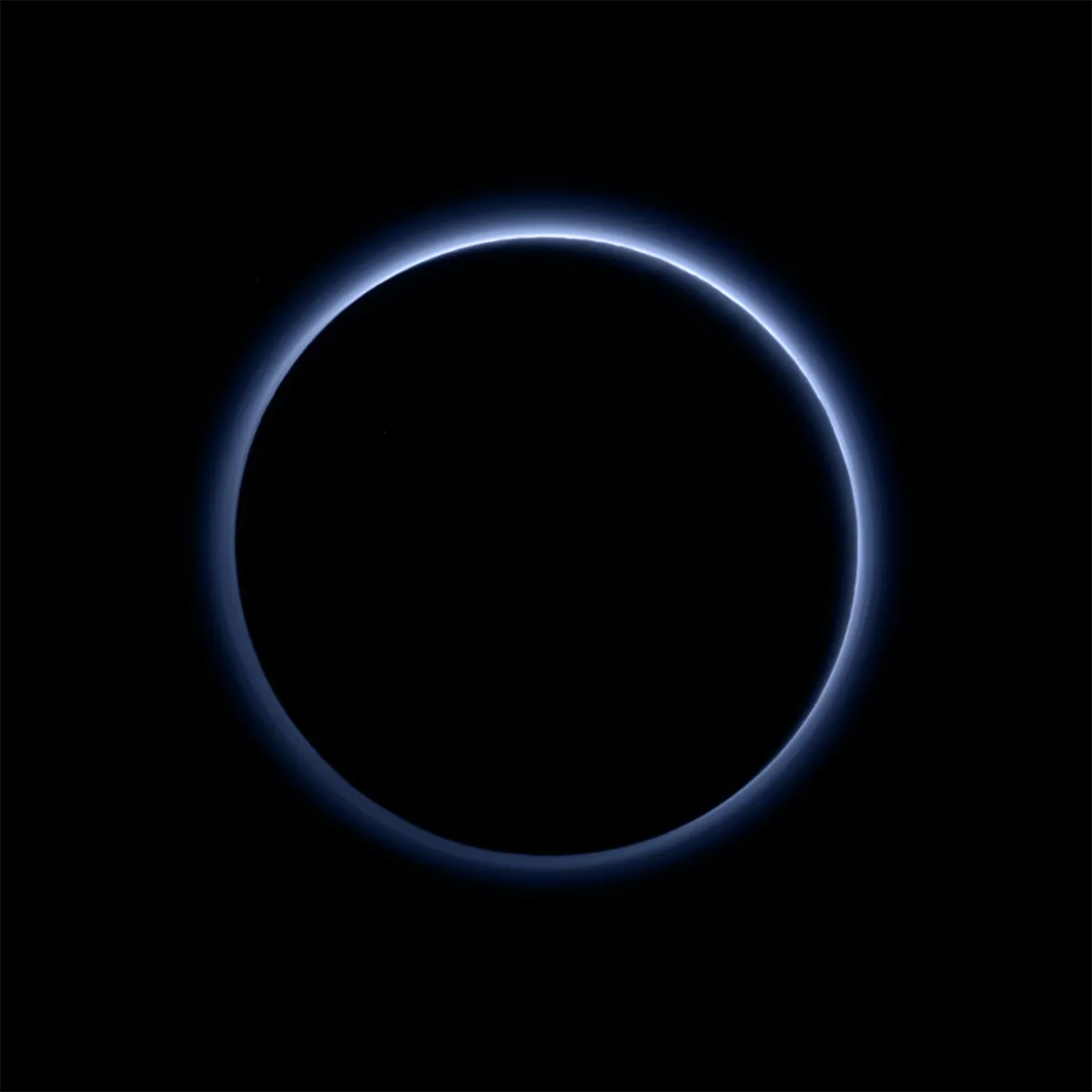
Features known as Wright Mons and Piccard Mons might be cryovolcanoes, periodically extruding melted slurries of water-ice, nitrogen, ammonia and methane with the consistency of toothpaste.
New Horizons measured Pluto’s thin nitrogen atmosphere as far as 1,600km (1,000 miles) from the surface.
Scientists say up to 20 observed atmospheric haze layers may be induced by pressure waves driven by airflow over Pluto’s mountains.
Clouds are rare on Pluto. Any possible clouds tend to be small in size and materialise in cooler climes at dawn or dusk.

Pluto’s true colours
Pluto’s surface hues range from pinkish nitrogen deposits to regions tinged bluish-grey, interspersed with redder colourations likely caused by dark ‘tholins’, complex organic molecules formed when methane is exposed to ultraviolet sunlight.
Nowhere are tholins more visibly apparent than the curious reddish ‘hood’ that cloaks Charon’s north pole.
Measuring 375km (250 miles) wide and named Mordor Macula after the dark land in JRR Tolkien’s The Lord of the Rings, its source may be Pluto’s atmosphere, as escaping methane freezes onto Charon’s north pole and is broken down into heavier hydrocarbons and tholins by solar radiation.
In July 2018, NASA released new views of how Pluto might appear to a human’s naked eye, a ‘natural-colour’ panorama from calibrated New Horizons data.
This shows a world not distinctly red but rather a jumbled matrix of light and dark, from tar-like Belton Regio straddling Pluto’s equator to the more muted pastels of Sputnik Planitia, where methane is energised by ultraviolet sunlight.

Exploring Pluto's moons
Charon’s ancient, battered landscape – extensive faults and valleys four times longer and twice as deep as the Grand Canyon, smooth equatorial plains, cliffs higher than Mount Everest and possible landslides – points to a tumultuous history.
In December 2016, scientists announced the moon might once have had a salty water and ammonia ocean, whose gradual freezing yielded many of the surface fractures seen by New Horizons.
As for Pluto’s small moons, all have highly reflective surfaces of water ice.
They occupy chaotic, tumbling orbits due to Pluto and Charon’s complex gravitational dynamics.
All are irregular in shape, from double-lobed Kerberos to jellybean-like Nix, sizes varying from Hydra’s 45km (28 miles) to tiny Styx, only 16km (10 miles) wide.
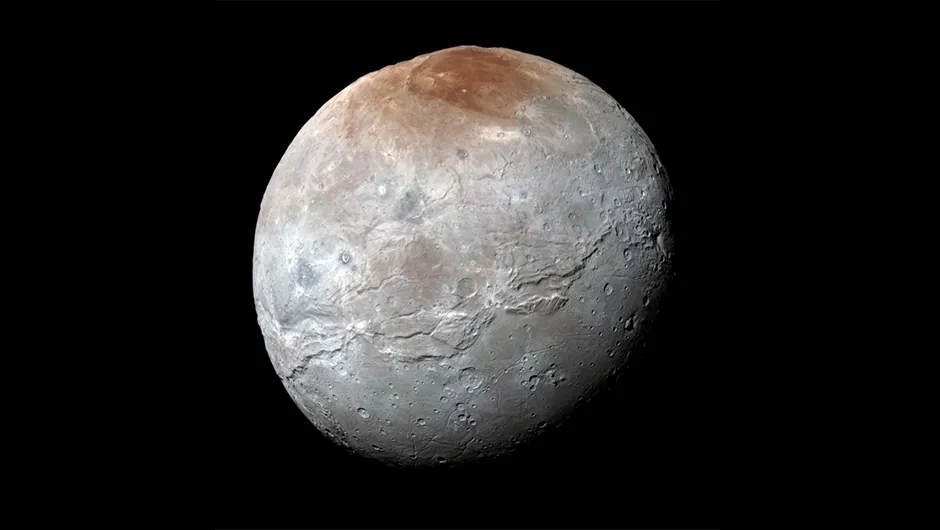
Further into the Kuiper Belt
Continuing its journey into the outer Solar System, on 1 January 2019, New Horizons flew within 3,500km (2,200 miles) of Kuiper Belt object Arrokoth, a near-pristine relic of the disc of material from which the Solar System formed.
A ‘contact binary’, snowman-shaped Arrokoth resides 6.4 billion km (4 billion miles) from the Sun and 1.6 billion km (1 billion miles) beyond Pluto.
Red-coloured Arrokoth measures 36km (22 miles) long, its two lightly cratered ‘lobes’ linked by a slender neck.
The visit by New Horizons remains the most distant fly-by ever performed by a spacecraft.
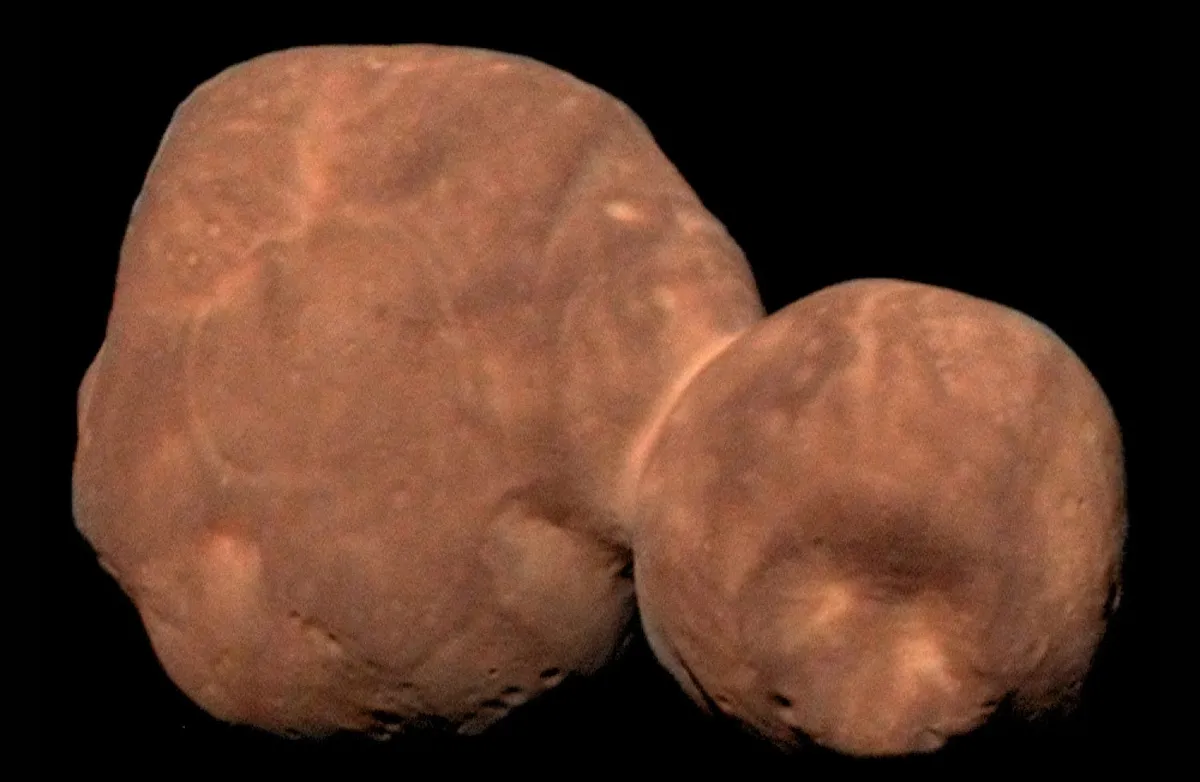
In April 2020, New Horizons and ground-based telescopes studied nearby stars Proxima Centauri and Wolf 359 to demonstrate easily observable stellar parallax.
And it measured the cosmic optical background, revealing a sky 10 times darker than seen by Hubble, thanks to the absence of the diffuse glow of scattered sunlight known as the ‘zodiacal light’.
The probe has helped model the shape of the heliosphere – a protective bubble generated by the Sun that surrounds the Solar System planets – revealing it might resemble a flattened croissant without a tail, rather than being comet-shaped as previously thought.
New Horizons also revealed that the solar wind is 6–7 per cent slower beyond Pluto than it is near to Earth.
It has observed Uranus as a proxy for studying exoplanets and, in September 2024, revealed the Kuiper Belt might extend 20% further than theorised.
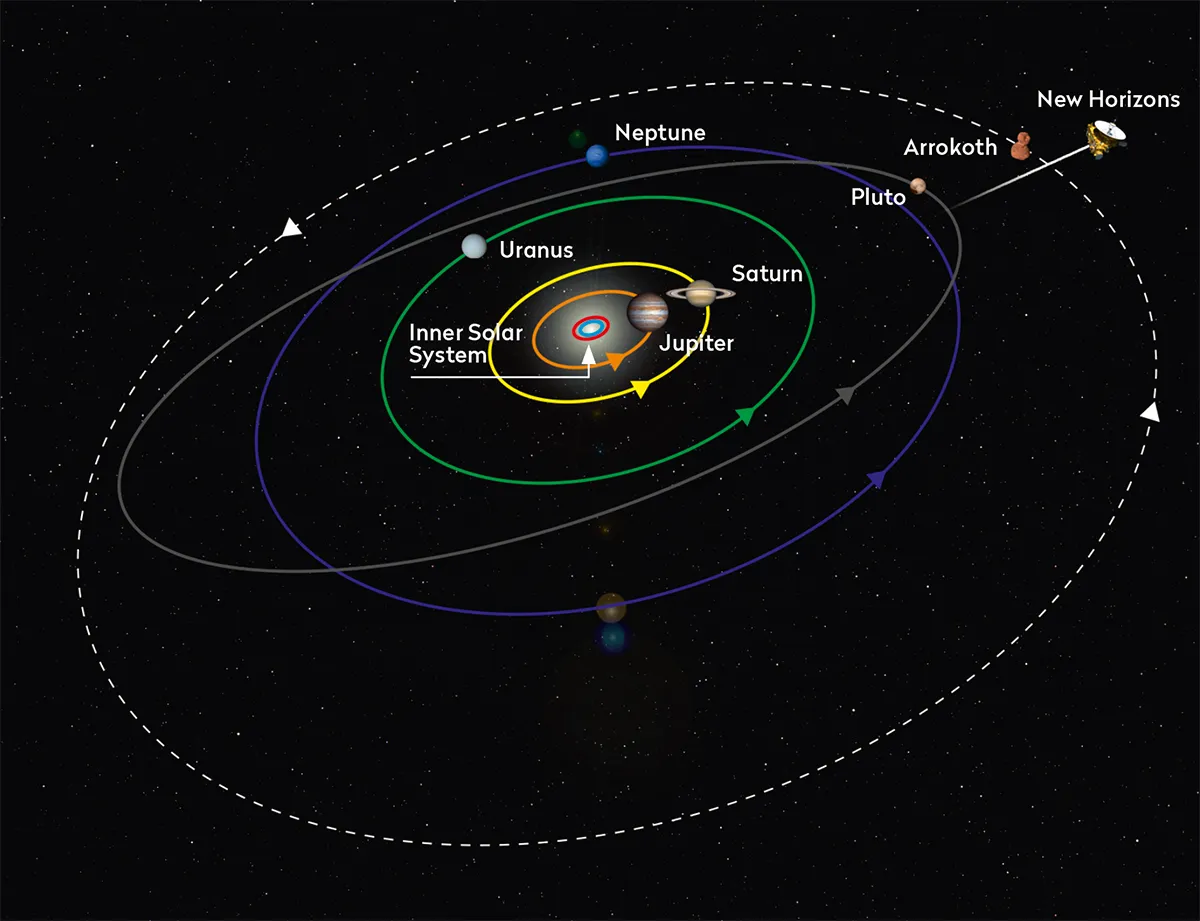
more perturbed orbits
What now?
Today, New Horizons is 9.3 billion km (5.8 billion miles) away, 62 times the distance between Earth and the Sun.
It’s the fifth most distant spacecraft after Voyagers 1 and 2 and Pioneers 10 and 11, all of which have departed the Solar System.
Travelling at 49,200km/h (30,600mph) and covering 480 million km (300 million miles) per year, New Horizons’ mission will continue until it exits the Kuiper Belt in 2028–2029.
Its plutonium-fuelled generator could keep it going into the 2040s, by which time the probe will be 15 billion km (9.3 billion miles) from the Sun.
If it remains functional, New Horizons could then be tasked with a new mission to explore other new horizons, far beyond the Solar System.
This article appeared in the July 2025 issue of BBC Sky at Night Magazine